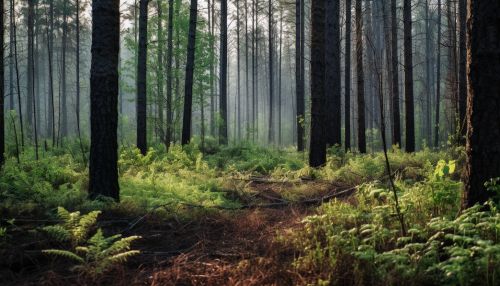Fire adaptations
Introduction
Fire adaptations are evolutionary traits and behaviors that enable plants and animals to survive and thrive in environments prone to wildfires. These adaptations can be physical, such as heat-resistant seeds or bark, or behavioral, such as animals fleeing an area when they sense smoke. Fire adaptations are a key aspect of fire ecology, which studies the role of fire in ecosystems.
Plant Adaptations
Plants have developed a variety of fire adaptations to survive in fire-prone environments. Many of these adaptations involve the plant's life cycle and reproductive strategies.
Resprouting
Some plants, such as the eucalyptus tree, have the ability to resprout from their base or roots after a fire. This is known as clonal propagation, and it allows the plant to quickly regrow after being damaged or killed by fire.
Fire-activated Seeds
Some plants produce seeds that are activated by the heat or smoke of a fire. These seeds can remain dormant in the soil for many years until a fire triggers their germination. This strategy ensures that the seeds will only sprout in conditions that are favorable for their growth, such as the nutrient-rich soil left behind after a fire. Examples of plants with fire-activated seeds include the lodgepole pine and the banksia.
Thick Bark
Many tree species that live in fire-prone environments have developed thick, insulating bark that can protect the inner tissues of the tree from the heat of a fire. This adaptation allows the tree to survive fires that would kill other plants. Examples of trees with thick bark include the giant sequoia and the cork oak.


Animal Adaptations
Animals have also developed a range of fire adaptations to survive in fire-prone environments. These adaptations can be behavioral, such as fleeing from a fire, or physical, such as having heat-resistant skin.
Fire Avoidance
Many animals have developed behaviors to avoid fire. These can include fleeing from an area when they sense smoke or heat, or burrowing underground to escape the flames. Some animals, such as the black-backed woodpecker, are attracted to recently burned areas because they provide a rich source of food.
Heat Resistance
Some animals have developed physical adaptations to survive the heat of a fire. For example, the Pompeii worm is able to withstand temperatures up to 80 degrees Celsius, making it one of the most heat-resistant animals known.
Human Use of Fire Adaptations
Humans have long recognized and utilized the fire adaptations of plants and animals. For example, many indigenous cultures practice controlled burning to stimulate the growth of certain plants and manage the landscape. In modern times, understanding fire adaptations can help in the management of forests and other fire-prone ecosystems.
Conclusion
Fire adaptations are a fascinating aspect of evolution, demonstrating the incredible resilience and adaptability of life. By understanding these adaptations, we can better manage and protect our natural environments, particularly in an era of increasing wildfire frequency due to climate change.
